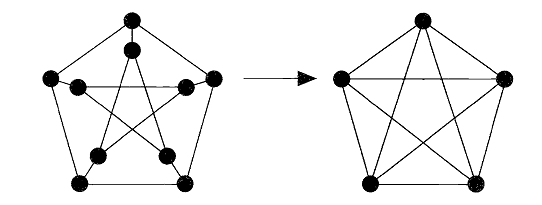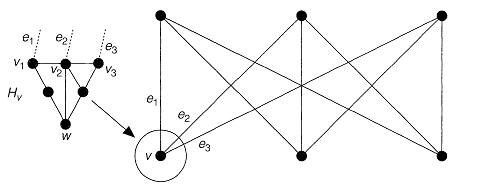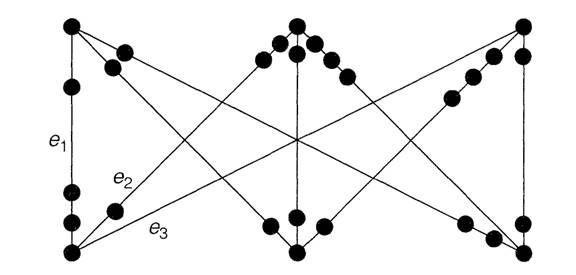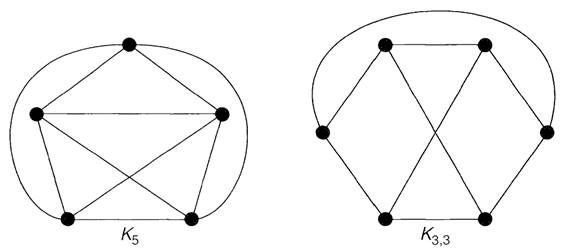

تاريخ الرياضيات

الاعداد و نظريتها

تاريخ التحليل

تار يخ الجبر

الهندسة و التبلوجي


الرياضيات في الحضارات المختلفة

العربية

اليونانية

البابلية

الصينية

المايا

المصرية

الهندية


الرياضيات المتقطعة

المنطق

اسس الرياضيات

فلسفة الرياضيات

مواضيع عامة في المنطق


الجبر

الجبر الخطي

الجبر المجرد

الجبر البولياني

مواضيع عامة في الجبر

الضبابية

نظرية المجموعات

نظرية الزمر

نظرية الحلقات والحقول

نظرية الاعداد

نظرية الفئات

حساب المتجهات

المتتاليات-المتسلسلات

المصفوفات و نظريتها

المثلثات


الهندسة

الهندسة المستوية

الهندسة غير المستوية

مواضيع عامة في الهندسة

التفاضل و التكامل


المعادلات التفاضلية و التكاملية

معادلات تفاضلية

معادلات تكاملية

مواضيع عامة في المعادلات


التحليل

التحليل العددي

التحليل العقدي

التحليل الدالي

مواضيع عامة في التحليل

التحليل الحقيقي

التبلوجيا

نظرية الالعاب

الاحتمالات و الاحصاء

نظرية التحكم

بحوث العمليات

نظرية الكم

الشفرات

الرياضيات التطبيقية

نظريات ومبرهنات


علماء الرياضيات

500AD

500-1499

1000to1499

1500to1599

1600to1649

1650to1699

1700to1749

1750to1779

1780to1799

1800to1819

1820to1829

1830to1839

1840to1849

1850to1859

1860to1864

1865to1869

1870to1874

1875to1879

1880to1884

1885to1889

1890to1894

1895to1899

1900to1904

1905to1909

1910to1914

1915to1919

1920to1924

1925to1929

1930to1939

1940to the present

علماء الرياضيات

الرياضيات في العلوم الاخرى

بحوث و اطاريح جامعية

هل تعلم

طرائق التدريس

الرياضيات العامة

نظرية البيان
Planar graphs
المؤلف:
Robin J. Wilson
المصدر:
Introduction to Graph Theory ,Fourth edition
الجزء والصفحة:
60-64
22-7-2016
4916
A planar graph is. a graph that can be drawn in the plane without crossings - that is, so that no two edges intersect geometrically except at a vertex to which both are incident.
Any such drawing is a plane drawing. For convenience, we often use the abbreviation plane graph for a plane drawing of a planar graph. For example, Fig. 1.1 shows three drawings of the planar graph K4, but only the second and third are plane graphs.

Fig. 1.1
The right-hand drawing in Fig, 12.1 leads us to ask whether every planar graph can be drawn in the plane so that each edge is represented by a straight line. Although loops or multiple edges cannot be drawn as straight lines, it was proved independently by K. Wagner in 1936 and I. Fa`ry in 1948 that every simple planar graph can be drawn with straight lines; see Chartrand and Lesniak [2] for details.
Not all graphs are planar, as the following theorem shows:
THEOREM 1.1. k3,3 and K5 are non-planar.
Remark. We give two proofs of this result. The first one, presented here, is constructive. The second proof, which we give in Section, appears as a corollary of Euler's formula.
Proof. Suppose first that K3,3 is planar. Since K3,3 has a cycle u → v →w → x →y →z →u of length 6, any plane drawing must contain this cycle drawn in the form of a hexagon, as in Fig. 1.2.

Fig. 1.2 Fig. 1.3
Now the edge wz must lie either wholly inside the hexagon or wholly outside it. We deal with the case in which wz lies inside the hexagon - the other case is similar.
Since the edge ux must not cross the edge wz, it must lie outside the hexagon; the situation is now as in Fig. 1.3. It is then impossible to draw the edge vy, as it wouldcross either ux or wz. This gives the required contradiction.
Now suppose that K$ is planar. Since K5 has a cycle v →w → x →y →z →vof length 5, any plane drawing must contain this cycle drawn in the form of a pentagon, as in Fig; 1.4.

Fig. 1.4 Fig. 1.5
Now the edge wz must lie either wholly inside the pentagon or wholly outside it. We deal with the case in which wz lies inside the pentagon - the other case is similar. Since the edges vx and vy do not cross the edge wz, they must both lie outside the pentagon; the situation is now as in Fig. 1.5. But the edge xz cannot cross the edge vy and so must lie inside the pentagon; similarly the edge wy must lie inside the pentagon, and the edges wy and xz must then cross. This gives the required contradiction.
Note that every subgraph of a planar graph is planar, and that every graph with a non-planar subgraph must be non-planar. It follows that any graph with k3,3 or K5 as asubgraph is non-planar. In fact, as we shall see, these two graphs are the 'building blocks' for non-planar graphs, in the sense that every non-planar graph must 'contain' at least one of them.
THEOREM 1.2 (Kuratowski, 1930). A graph is planar if and only if it contains no subgraph homeomorphic to K5 or K3,3.
The proof of Kuratowski's theorem is long and involved, and we omit it; see Bondy and Murty [3] or Harary [4] for a proof. We shall, however, use Kuratowski's theorem to obtain another criterion for planarity. To do so, we first define a graph H to be contractible to K5 or K3,3 if we can obtain K5 or K3,3 by successively contracting edges of H. For example, the Petersen graph is contractible to K5, as we can see by contracting the five 'spokes' joining the inner and outer 5-cycles (see Fig. 1.6).

Fig.1.6
THEOREM 1.3. A graph is planar if and only if it contains no subgraph contractible to K5 or K3,3.
Sketch of proof. ← Assume first that the graph G is non-planar. Then, by Kuratowski's theorem, G contains a subgraph H homeomorphic to K5or k3,3. On successively contracting edges of H that are incident td a vertex of degree 2, we see that H is contractible to K5 or k3,3.
→Now assume that G contains a subgraph H contractible to K3,3, and let the vertex v of k3, 3 arise from contracting the subgraph Hv of H (see Fig. 1.7).

Fig.1.7
The vertex v is incident in k3,3 to three edges e1, e2 and e3. When regarded as edges of H, these edges are incident to three (not necessarily distinct) vertices v1, v2 and v3 of Hv. If v1, v2 and V 3 are distinct, then we can find a vertex w of Hv and three paths from w to these vertices, intersecting only at w. (There is a similar construction if the vertices are not distinct, the paths degenerating in this case to single vertices.) It follows that we can replace the subgraph Hv by a vertex w and three paths leading out of it. If this construction is carried out for each vertex of K3,3, and the resulting paths joined up with the corresponding edges of K3,3, then the resulting subgraph is homeomorphic to K3,3.
It follows from Kuratowski's theorem that G is non-planar (see Fig. 1.8).

Fig.1.8
A similar argument can be carried out ifGcontainsasubgraphcontractibletok5 . Herethedetailsaremorecomplicated,asthesubgraphweobtainbytheaboveprocess Can be homeomorphic to either K5 ork3,3 ;see Chartrand and Lesniak Weconcludethissectionbyintroducingthe'crossing-number'ofagraph.If we trytodrawk5ork3,3 on the plane, then there must be at least one crossing of edges, sincethesegraphsarenotplanar.However,wedonotneedmorethanonecrossing (seeFig.1.9),and wesaythatK5and k3,3 have crossing number1 .
Moregenerally,thecrossingnumbercr(G)ofagraphGistheminimumnumberofcrossingsthatcanoccurwhenGisdrawnintheplane.Thus,thecrossingnumber

Fig.1.9
Can be used to measure how 'unplanar ' G is .For example, the crossing number of any planargraphis0,andcr(K5)=cr(k 3,3)=1.Notethattheword'crossing 'always refers
To theintersection of just two edges; crossings of three or more edgesarenotpermitted.
1-Introduction to Graph Theory ,Fourth edition ,Robin J. Wilson, British Library ,1996.page(60-64)
2-G. Chartrand and L. Lesniak, Graphs < & Digraphs, 2nd edn, Wadsworth & Brooks/Cole, 1986.
3- J. A. Bondy and U. S. R. Murty, Graph Theory with Applications, American Elsevier, 1979.
4- F. Harary, Graph Theory, Addison-Wesley, 1969.
 الاكثر قراءة في نظرية البيان
الاكثر قراءة في نظرية البيان
 اخر الاخبار
اخر الاخبار
اخبار العتبة العباسية المقدسة

الآخبار الصحية















 قسم الشؤون الفكرية يصدر كتاباً يوثق تاريخ السدانة في العتبة العباسية المقدسة
قسم الشؤون الفكرية يصدر كتاباً يوثق تاريخ السدانة في العتبة العباسية المقدسة "المهمة".. إصدار قصصي يوثّق القصص الفائزة في مسابقة فتوى الدفاع المقدسة للقصة القصيرة
"المهمة".. إصدار قصصي يوثّق القصص الفائزة في مسابقة فتوى الدفاع المقدسة للقصة القصيرة (نوافذ).. إصدار أدبي يوثق القصص الفائزة في مسابقة الإمام العسكري (عليه السلام)
(نوافذ).. إصدار أدبي يوثق القصص الفائزة في مسابقة الإمام العسكري (عليه السلام)


















